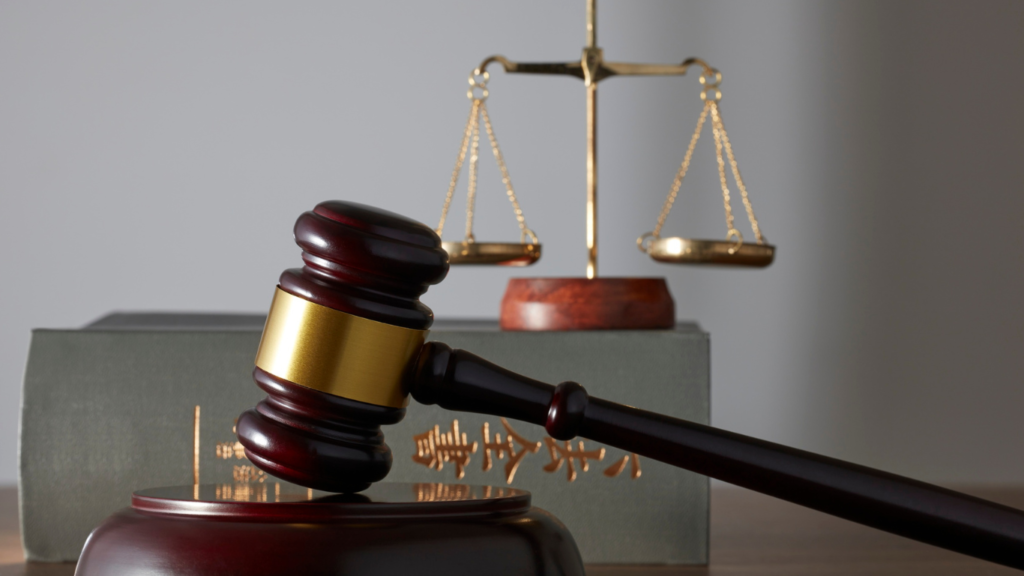Exploring the electrifying world of criminology, where the mysteries of crime unravel through the lens of science, psychology, and society. The schools of criminology are the beating heart of this discipline, offering gripping frameworks that explain why people commit crimes and how we can prevent them. From the shadowy alleys of classical thought to the cutting-edge insights of modern biosocial theories, these schools captivate scholars, law enforcers, and curious minds alike. In this blog, we embark on a thrilling exploration of the major schools of criminology, their historical roots, key thinkers, and real-world implications. This is crafted for readers eager to learn.
What Are the Schools of Criminology?
Criminology, the scientific study of crime, criminals, and the criminal justice system, is a field that pulses with intrigue. The schools of criminology are distinct theoretical frameworks that explain the causes of criminal behavior and propose solutions to curb it. Each school represents a unique perspective, shaped by historical context, philosophical debates, and societal shifts. From the rational choices of the 18th century to the biological and environmental factors of today, these schools form a vibrant tapestry of ideas that continue to shape policies, spark debates, and solve real-world crimes.
Why should you care? Understanding these schools isn’t just academic—it’s a window into the human condition, offering insights into why crimes happen and how society responds. Whether you’re a student, a true-crime enthusiast, or a professional in law enforcement, this guide will ignite your curiosity and deepen your knowledge. Let’s explore the major schools of criminology, their electrifying contributions, and their lasting impact.
1. The Classical School: Where It All Began
The Birth of Rational Choice
Picture the 18th century: a time of enlightenment, revolution, and bold new ideas. Enter the Classical School of Criminology, the trailblazer that laid the foundation for modern criminology. Spearheaded by Italian philosopher Cesare Beccaria and English jurist Jeremy Bentham, this school argued that criminals are rational actors who weigh the costs and benefits of their actions. Crime, they said, is a choice driven by free will, not demonic possession or fate.
Beccaria’s seminal work, On Crimes and Punishments (1764), was a bombshell. He criticized the brutal, arbitrary punishments of the era—think public executions and torture—and proposed a radical idea: punishment should be proportionate, humane, and designed to deter, not destroy. Bentham’s hedonistic calculus added fuel to the fire, suggesting that humans seek pleasure and avoid pain, making deterrence the key to crime prevention.
Key Principles
Free Will: Individuals choose to commit crimes after calculating risks and rewards.
Deterrence: Swift, certain, and proportionate punishments prevent crime.
Social Contract: Laws protect society, and citizens agree to abide by them.
Reformative Justice: Punishments should reform, not merely punish.
Impact and Legacy
The Classical School revolutionized criminal justice, inspiring modern legal systems, the abolition of torture, and the concept of “innocent until proven guilty.” Its ideas underpin policies like mandatory sentencing and three-strikes laws. However, critics argue it oversimplifies human behavior, ignoring social, psychological, and biological factors—a gap later schools addressed.
Sensational Twist: Beccaria wrote his groundbreaking treatise at just 26, defying the oppressive monarchies of his time. His ideas sparked global reforms, making him a hero of justice!
2. The Positivist School: Science Meets Crime
A Paradigm Shift
Fast-forward to the 19th century, when science was reshaping the world. The Positivist School of Criminology burst onto the scene, challenging the Classical School’s reliance on free will. Led by Italian physician Cesare Lombroso, often dubbed the “father of modern criminology,” positivists argued that crime is determined by factors beyond individual control—biology, psychology, and environment.
Lombroso’s Criminal Man (1876) was a game-changer. He claimed criminals were “born,” not made, identifiable by physical traits like large jaws, low foreheads, or asymmetrical faces—his infamous “atavistic theory.” While controversial, this marked criminology’s shift toward empirical research and data-driven insights.
Key Figures
Cesare Lombroso: Pioneered biological determinism, linking crime to physical anomalies.
Enrico Ferri: Emphasized social and economic factors, advocating for crime prevention over punishment.
Raffaele Garofalo: Introduced “natural crime,” focusing on acts harmful to society’s moral code.
Key Principles
Determinism: Crime results from biological, psychological, or social factors, not free will.
Scientific Method: Use observation, measurement, and experimentation to study crime.
Individualized Treatment: Punishments should fit the criminal’s traits, not just the crime.
Prevention: Address root causes like poverty or mental illness to reduce crime.
Impact and Legacy
The Positivist School brought criminology into the scientific age, inspiring forensic psychology, criminal profiling, and rehabilitation programs. Lombroso’s atavistic theory, though debunked, paved the way for studying genetic and neurological factors in crime.. Critics, however, caution against its potential to stereotype or stigmatize individuals.
Sensational Twist: Lombroso’s studies involved dissecting the brains of executed criminals, believing he’d unlock the secrets of deviance. His eerie collection of skulls and artifacts is still displayed in Turin’s Museum of Criminal Anthropology!
3. The Chicago School: Crime in the Urban Jungle
The City as a Crime Lab
The early 20th century saw cities explode with growth—and crime. The Chicago School of Criminology, rooted in the University of Chicago’s sociology department, turned the urban landscape into a living laboratory. Pioneers like Robert Park, Ernest Burgess, and Clifford Shaw argued that crime is a product of social and environmental conditions, not just individual traits.
Using Chicago’s diverse neighborhoods, they developed the concentric zone model, showing how crime rates spiked in “transitional zones” marked by poverty, immigration, and instability. Their social disorganization theory linked crime to weak community ties, making it a cornerstone of urban criminology.
Key Principles
Social Disorganization: Crime flourishes in areas with low social cohesion, poverty, and rapid change.
Ecological Approach: Neighborhood structures, not just individuals, shape criminal behavior.
Cultural Transmission: Criminal behavior is learned through social interactions in disorganized areas.
Community Solutions: Strengthen community ties to reduce crime.
Impact and Legacy
The Chicago School’s insights revolutionized urban planning and community policing, influencing programs like neighborhood watch and social work interventions. Its focus on environment over biology countered the Positivist School’s determinism, as Sociology Group notes. However, critics argue it overlooks individual agency and broader systemic issues like racism.
Sensational Twist: Chicago School researchers mapped crime by hand, trudging through gritty neighborhoods to interview gang members and residents. Their daring fieldwork turned sociology into a street-level science!
4. The Strain/Anomie School: When Dreams Turn Dark
The Pressure to Deviate
Imagine a society where everyone chases the “American Dream” but only a few succeed. The Strain/Anomie School, led by Robert Merton in the 1930s, explores how societal pressures drive crime. Building on Émile Durkheim’s concept of anomie (normlessness), Merton argued that crime occurs when people can’t achieve culturally valued goals (e.g., wealth, status) through legitimate means.
Merton’s strain theory identifies five responses to this disconnect:
Conformity: Accept goals and legitimate means.
Innovation: Pursue goals through illegal means (e.g., theft).
Ritualism: Abandon goals but follow rules.
Retreatism: Reject both goals and means (e.g., addiction).
Rebellion: Replace goals and means with new ones (e.g., revolution).
Key Principles
Strain: Tension between societal goals and limited opportunities fuels crime.
Anomie: Breakdown of social norms in unequal societies encourages deviance.
Structural Inequality: Poverty and discrimination create criminogenic conditions.
Policy Focus: Reduce inequality to lower crime rates.
Impact and Legacy
Strain theory reshaped criminology by highlighting systemic issues, influencing policies like job training and education reform. It remains relevant in studying economic crimes and juvenile delinquency, as StudyIQ points out. Critics, however, note it struggles to explain non-economic crimes or affluent offenders.
Sensational Twist: Merton’s theory inspired the gritty realism of films like The Godfather, where characters turn to crime when legitimate paths to success are blocked. His ideas still echo in pop culture’s portrayal of the underdog!
5. The Labeling School: The Power of a Name
Stigma as a Crime Catalyst
What if calling someone a “criminal” makes them act like one? The Labeling School, emerging in the 1960s, argues that society’s labels—thief, delinquent, felon—shape criminal behavior. Pioneered by Howard Becker and Edwin Lemert, this school focuses on how social reactions, not just actions, create deviance.
Lemert’s distinction between primary deviance (initial rule-breaking) and secondary deviance (embracing a criminal identity after labeling) was groundbreaking. For example, a teen caught shoplifting (primary) may become a repeat offender if labeled a “thief” (secondary), as society’s stigma limits their opportunities.
Key Principles
Social Reaction: Labels from authorities, peers, or media drive criminal identities.
Stigma: Negative labels marginalize individuals, pushing them toward deviance.
Self-Fulfilling Prophecy: Labeled individuals internalize and act out their assigned roles.
Decriminalization: Reduce labeling through restorative justice or diversion programs.
Impact and Legacy
The Labeling School influenced reforms like juvenile diversion and anti-stigma campaigns, emphasizing rehabilitation over punishment. It’s widely applied in studies of recidivism and mental health, as Sociology Group notes. Critics argue it downplays the seriousness of crimes and individual accountability.
Sensational Twist: Becker’s book Outsiders (1963) drew from his experiences studying jazz musicians labeled as “deviants.” His rebellious spirit challenged society’s moral judgments, making him a cult figure in sociology!
6. The Conflict/Critical School: Crime as Power Play
The Dark Side of Society
The 1960s and 1970s were turbulent, with civil rights struggles and anti-war protests exposing societal fractures. The Conflict/Critical School, inspired by Marxist theory, argued that crime is a product of power struggles between social classes. Thinkers like Richard Quinney and William Chambliss claimed the ruling elite define “crime” to maintain control, criminalizing the poor while ignoring corporate wrongs.
This school critiques capitalism, racism, and patriarchy as criminogenic forces, highlighting how laws disproportionately target marginalized groups. For example, drug laws often punish street dealers but overlook pharmaceutical companies’ role in opioid crises.
Key Principles
Power Dynamics: Laws reflect the interests of the powerful, not society as a whole.
Class Conflict: Crime stems from economic inequality and exploitation.
Social Justice: Address systemic issues like poverty and racism to reduce crime.
Critical Lens: Challenge mainstream criminology’s focus on individual offenders.
Impact and Legacy
The Conflict School fueled advocacy for prison reform, decriminalization, and social equity, influencing movements like Black Lives Matter. Its ideas resonate in studies of white-collar crime and systemic bias, as CliffsNotes emphasizes. Critics argue it overemphasizes class at the expense of other factors like biology or psychology.
Sensational Twist: Quinney’s radical writings landed him on government watchlists during the Vietnam War era, proving his point about power and repression. His courage made him a legend in critical criminology!
7. The Biosocial School: Nature Meets Nurture
The Modern Frontier
Enter the 21st century, where science and technology are rewriting criminology’s playbook. The Biosocial School combines biology, psychology, and sociology to explain crime, arguing that nature and nurture interact to shape behavior. Thinkers like Adrian Raine and Kevin Beaver study how genetics, brain structure, and environment—like trauma or pollution—drive criminality.
For example, low serotonin levels or prefrontal cortex damage may impair impulse control, while poverty amplifies these risks. The school uses cutting-edge tools like fMRI scans and DNA analysis to uncover crime’s roots.
Key Principles
Interactionism: Biology and environment jointly influence behavior.
Neurocriminology: Brain abnormalities contribute to aggression or impulsivity.
Genetics: Traits like low empathy may have hereditary components.
Prevention: Early interventions (e.g., nutrition, therapy) can mitigate risks.
Impact and Legacy
The Biosocial School is transforming criminal justice with applications in risk assessment, rehabilitation, and early intervention programs. It’s controversial, however, for raising ethical concerns about genetic profiling or “predicting” criminality, as Study.com notes. Its evidence-based approach is reshaping policy and research.
Sensational Twist: Raine’s brain scans of murderers revealed chilling patterns, like reduced activity in empathy-related areas. His work reads like a sci-fi thriller, blurring the line between science and justice!
Comparing the Schools: A Thrilling Clash of Ideas
Each school of criminology offers a unique lens, creating a dynamic debate:
Classical vs. Positivist: Free will clashes with determinism, pitting choice against biology.
Chicago vs. Strain: Environment battles societal pressure, focusing on community versus inequality.
Labeling vs. Conflict: Social reactions face off against power dynamics, highlighting stigma versus systemic oppression.
Biosocial vs. All: Modern science integrates earlier theories, blending nature and nurture.
This clash fuels criminology’s evolution, ensuring no single school dominates. As StudyIQ notes, combining insights from multiple schools offers the most comprehensive understanding of crime.
Real-World Applications: From Theory to Action
The schools of criminology aren’t just academic—they shape the world:
Classical: Inspires deterrence-based policies like harsher sentences or CCTV surveillance.
Positivist: Drives rehabilitation programs, forensic psychology, and criminal profiling.
Chicago: Informs community policing, urban renewal, and gang intervention initiatives.
Strain: Supports job creation, education reform, and poverty alleviation to reduce crime.
Labeling: Promotes restorative justice, diversion programs, and anti-stigma campaigns.
Conflict: Advocates for decriminalization, prison reform, and addressing systemic bias.
Biosocial: Guides early interventions, mental health treatment, and risk assessment tools.
These applications, detailed on Sociology Group, show how criminology tackles real issues, from street crime to corporate fraud.
Criticisms and Controversies: The Dark Side
No school is without flaws:
Classical: Ignores social and biological factors, oversimplifying human behavior.
Positivist: Risks stereotyping (e.g., Lombroso’s “criminal type”) and determinism.
Chicago: Overlooks individual agency and systemic issues like racism.
Strain: Struggles with non-economic crimes or affluent offenders.
Labeling: May downplay serious crimes or victim harm.
Conflict: Overemphasizes class, neglecting other crime causes.
Biosocial: Raises ethical concerns about genetic profiling or stigmatizing biology.
These debates, as CliffsNotes highlights, keep criminology dynamic, pushing scholars to refine theories and policies.
Why Study the Schools of Criminology in 2025?
In 2025, criminology is more relevant than ever. Rising cybercrime, debates over prison reform, and advances in neuroscience make understanding these schools critical. They offer:
Career Paths: Roles in law enforcement, forensic psychology, policy analysis, or academia.
Social Impact: Tools to address crime, inequality, and injustice.
Personal Insight: A deeper understanding of human behavior and society’s challenges.
Whether you’re binge-watching true-crime documentaries or pursuing a degree, these schools ignite curiosity and empower change, as Study.com emphasizes.
How to Dive Deeper
Want to explore further? Here’s how:
Read: Classics like Beccaria’s On Crimes and Punishments or Becker’s Outsiders.
Study: Enroll in criminology courses on platforms like Coursera or edX.
Research: Follow journals like Criminology or Journal of Quantitative Criminology.
Visit: Explore criminology museums, like Turin’s Museum of Criminal Anthropology.
Conclusion: The Endless Quest to Understand Crime
The schools of criminology are a thrilling journey through the why and how of crime, blending philosophy, science, and sociology into a captivating narrative. From Beccaria’s revolutionary calls for justice to Raine’s brain scans of killers, these schools reveal the complexity of human behavior and society’s response. They challenge us to think critically, act compassionately, and innovate boldly.
As you navigate this electrifying field, let the Classical School inspire your sense of justice, the Positivist School fuel your curiosity, and the Biosocial School spark your imagination. Whether you’re a student, professional, or true-crime fan, the schools of criminology offer endless mysteries to unravel. Dive in, explore, and join the quest to understand—and prevent—crime in 2025 and beyond.



